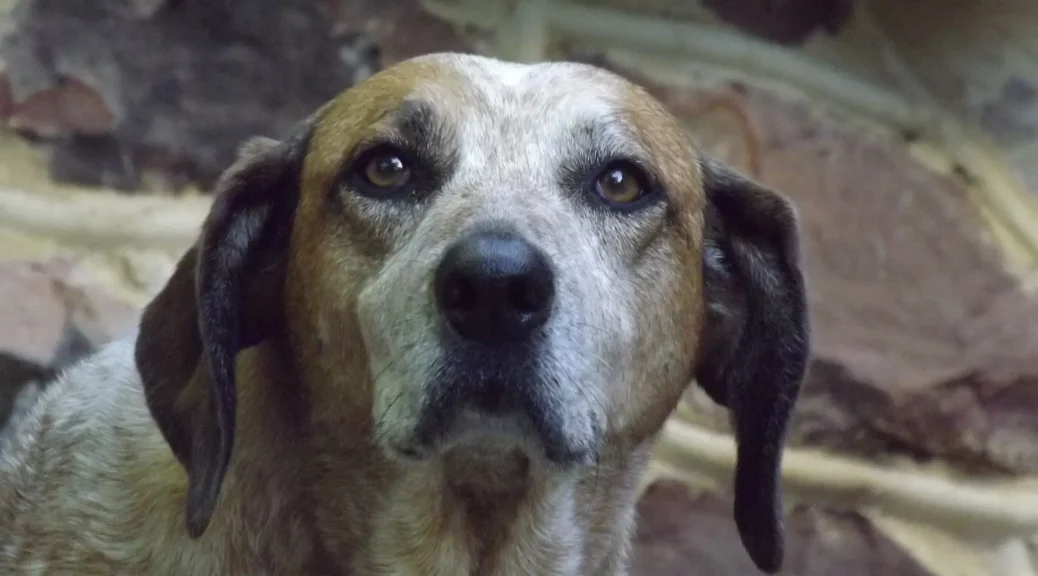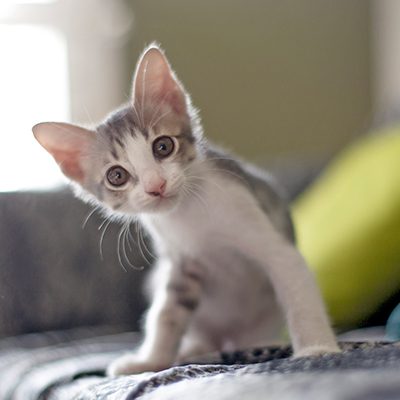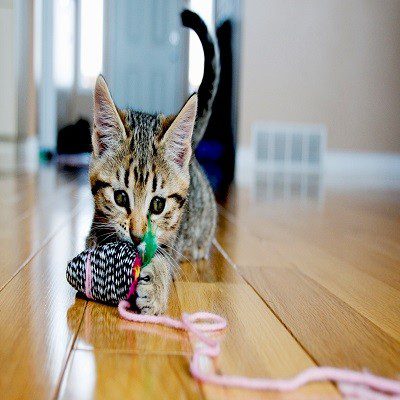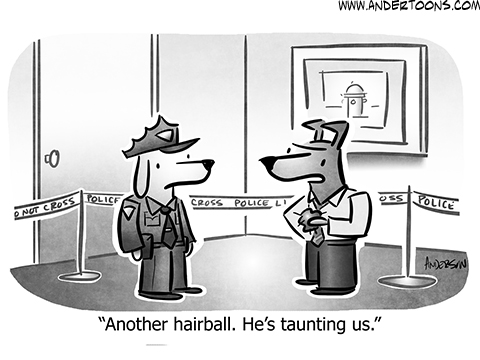Ever wonder about your dog’s intelligence? Some of our canine friends are very smart! The typical pooch can pick up more than 100 phrases and gestures. Some are capable of learning up to 250. As a matter of fact, Fido is about as intelligent as a two-year-old human toddler! Below, a local Troutville, VA veterinarian explores this intriguing subject.
How Do I Know If My Dog Is Intelligent?
Do you want to know how smart your dog is? In some cases, it’s pretty clear. Fido is probably fairly intelligent if he has managed to unlock the door or open the fridge.
However, there are a few methods you can try to put your pooch to the test.
Puzzle Toys: These are also a useful tool for determining your dog’s dog IQ. Give Fido a toy that he must operate or handle in a specific way in order for him to receive his prize. Another option is to try hiding munchies beneath a cup.
Learning: We definitely recommend prioritizing teaching Fido the fundamentals of obedience before moving on to tricks. That said, as you’re training your pet, see how long it takes him to pick up new skills.
Word Play: When you call your dog, do you typically speak in a particular tone of voice? Talk to Fido in that same tone, but say something else. Any phrase will do. The more random, the better! If you say “Garlic Bread” or “Star Trek time!” and Fido ignores you, but perks up when you call him by name, you may have a smart pupper on your hands.
Of course, there are situations where it could be simpler to recognize that your canine buddy isn’t the smartest dog on the block. Your pet will more than make up for his lack of intelligence, though, with his endearing charm and devoted companionship!
What Is The Average Dog IQ?
Fido can’t technically take written exams, of course. However, scientists have done a great deal of research in this area. The results? According to studies, the typical dog has an IQ of roughly 100.
What Were Some Really Smart Dogs?
At the top of that list are two Border Collies. Let’s start with Chaser. This amazing dog learned to recognize over a thousand objects by name! The cute dog participated in a Wofford College training program. Another Border Collie, Rico, was gaining attention for his intellect even before Chase arrived on the scene. Rico knew more than 200 words!
Of course, there’s another animal to which Chaser and Rico play second and third fiddle, respectively. Puck, a Budgie, was one special fluffy bird. That feathered genius learned nearly 1700 words!
Additionally, there are other dogs whose intelligence is causing waves besides these two.
Check out these other “pawesome” pups:
Fellow: When this German Shepherd was still a puppy, a man named Jacob Herbert fell in love with the cute canine. Herbert was able to teach the pooch to obey very specific commands, such as “Jump Over the Sofa” and “Go Into the Back Room.”
Gander: This dog is well known for his bravery and intelligence. A native of St. John’s, Newfoundland, Gander rose to fame in World War II by aiding Canadian soldiers. The amazing dog went so far as to grab a deadly grenade and carry it away from his fellow soldiers, ultimately giving his life to save theirs.
Colonel: Charles Kestler, the owner of the Merchants’ Hotel, was the owner of this Denver dog. Playing with his ball, which Kestler kept in the writing desk drawer, was the Colonel’s all-time favorite pastime. When no one would play with him one day, Colonel took matters into his own paws and figured out how to open the drawer. This involved stepping behind and under the desk, standing on his rear legs, and pushing the drawer open!
Which Dog Breed Is The Most Intelligent?
Breed undoubtedly contributes to Fido’s IQ. Several studies have been done on this. While there is a bit of variation in the order and list, for the most part, the same pups consistently make it to the top of the list.
Here they are:
- Border Collie
- Poodle
- German Shepherd
- Golden Retriever
- Doberman Pinscher
- Shetland Sheepdog
- Labrador Retriever
- Papillon
- Rottweiler
- Australian Cattle Dog
- Pembroke Welsh Corgi
- Miniature Schnauzer
- English Springer Spaniel
- Belgian Tervuren
- Schipperke
- Collie
- Keeshond
- German Shorthaired Pointer
Stanley Coren, PhD, outlined this comprehensive list in his book The Intelligence of Dogs, which came out in 1994.
Additionally, Cohen classified canine intelligence into three main categories.
- Instinctive Intelligence measures how strongly dogs naturally take to certain actions. The Border Collie’s behavior of “herding” his humans is a prime example of this.
- Adaptive Intelligence The ability of a dog’s mental processes to adapt to their surroundings is known as adaptive intelligence. This is relevant for a lot of working canines, such as assistance dogs for the blind. For example, service dogs may ignore orders to lead their humans across a street if they spot an approaching car.
- Working Obedience Fido will put in a lot of effort to please you. How quickly he responds is what is measured in working obedience. In one study, for example, the most intelligent breeds answered commands over 95% of the time on the first try.
We’re Still Learning About Dogs’ Intelligence
Although Cohen’s work is still highly regarded, further research has since provided additional insight into this subject. One particularly interesting study from Helsinki was published in 2022’s Scientific Reports.
Over 2350 pups were assessed by researchers between 2016 and 2022. The dogs were a mixture of mutts and purebreds. Each of them underwent a battery of tests, called the smartDOG test battery. Greeting behavior, activity level, exploratory behavior, learning, memory, inhibitory control, problem-solving, logic, and gesture interpretation were some of the areas of canine intelligence that were assessed in those tests.
Many of the results were as expected, particularly for certain breeds. A herding dog, for example, would be expected to be adept at gestures, so it’s no surprise that the Malinois did well in this area. A few of the findings were unexpected, though. For instance, the Labrador Retriever, who is frequently considered one of the smartest dogs, did not score well.
What Are The Least Intelligent Dogs?
Let’s just say this up front: we sincerely love every one of our canine patients. Not all dogs need to know how to fetch specific items or follow complex orders! Fido can still be a Very Good Boy even if he isn’t a four-legged brainiac.
We do have a list of the dog breeds that are the least clever, though, in case you were curious.
- Basset Hound
- Mastiff
- Beagle
- Pekingese
- Bloodhound
- Borzoi
- Chow Chow
- Bulldog
- Basenji
- Afghan Hound
These pups are still excellent pets, of course, and they should receive affection, affection, and belly rubs just like any other dog.
That being said, if your canine friend is one of these, we would definitely suggest being extra careful about petproofing and perhaps adopting a few extra safety precautions. Ask your Troutville, VA vet for tips on this.
Do you have concerns regarding the wellbeing or upkeep of your dog? Feel free to get in touch with us at any time. As your neighborhood Troutville, VA veterinary clinic, we can assist you!












